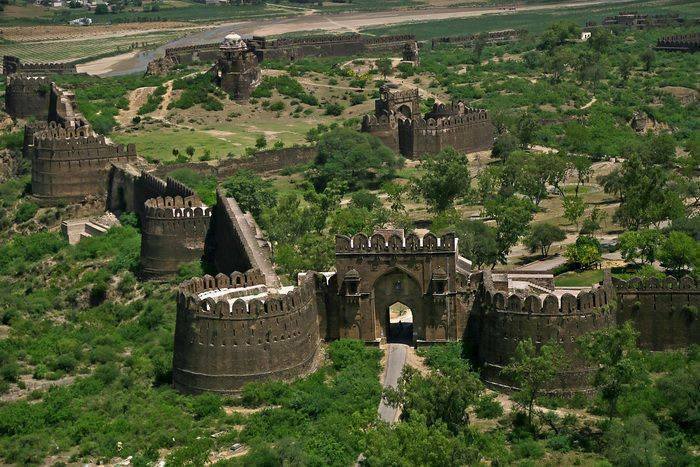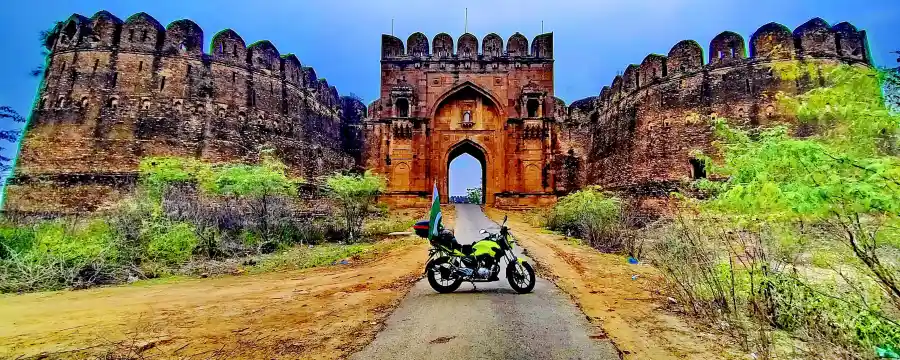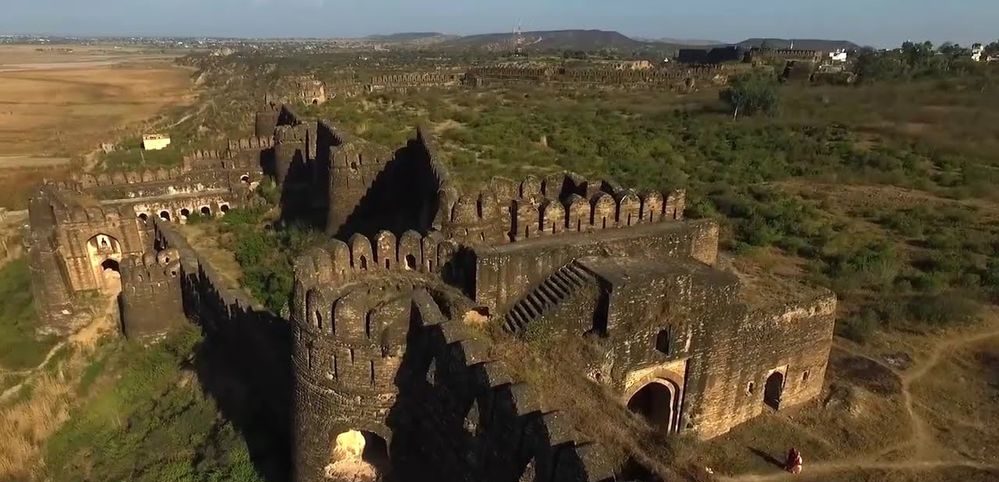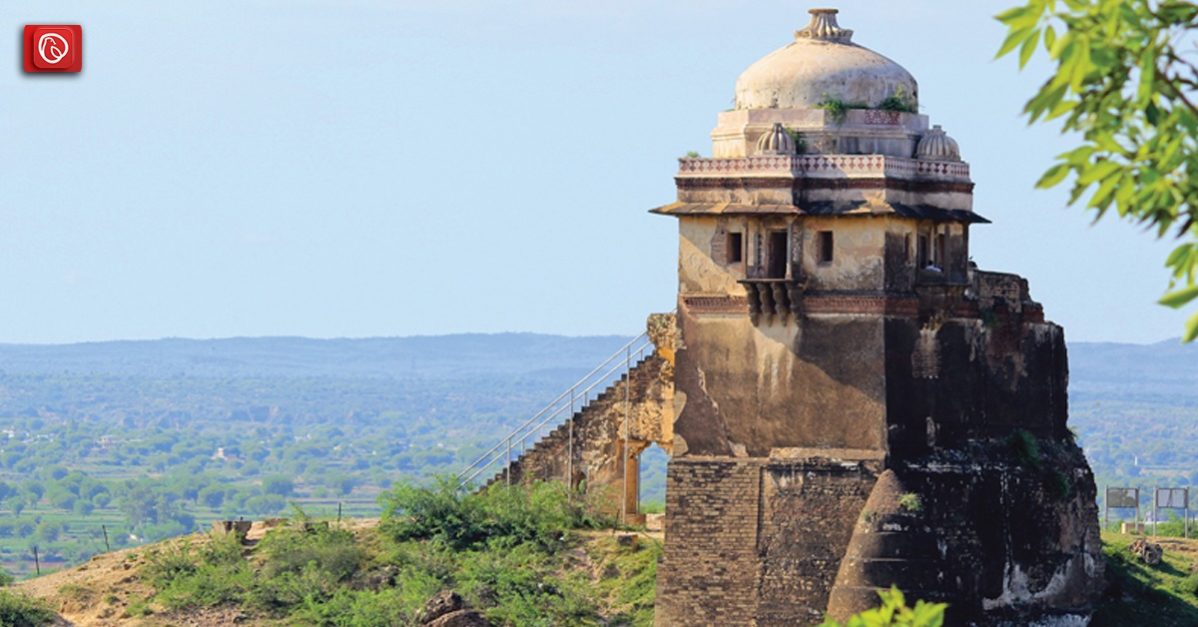Rohtas Fort, also known as Qila Rohtas, is a remarkable historical fortress located in the northern part of Punjab, Pakistan. Built during the 16th century by the Pashtun king Sher Shah Suri, this architectural marvel stands as a testament to the rich cultural heritage of the region.
With its grandeur, strategic location, and fascinating history, it has become a popular tourist destination. Graana.com has compiled a guide to Rohtas Fort below, including its history, architecture, significance, and more.
History

It is considered to be one of the most famous historical places in Pakistan. The fort’s construction began in 1541, under the guidance of Todar Mal Khatri, who served as the revenue minister of Sher Shah Suri. It took seven years to complete, from 1541 to 1548. It derived its name from the conquest of Sher Shah Suri, a Hindu prince who had a stronghold at Rostasgar in the Shahabad district in 1539.
Moreover, following the death of the king in 1545, his empire faced a rapid decline. Ten years later, Humayun ascended to the throne during the reign of Tatar Khan Khasi. It was Humayun’s son, Akbar, who built the splendid fort in Attock nearby in 1580.
From the 16th to the 19th century, Qila Rohtas served as a formidable military post. In 1825, it was also utilised for administrative purposes by Ranjit Singh. Unfortunately, the site suffered due to unauthorised encroachments.
Rohtas Fort Gates

Rohtas Fort has a total of twelve gates with unique designs, each constructed using ashlar stones.
Sohail Gate
Rohtas Fort is considered to be one of the biggest forts in Pakistan. The Sohail Gate showcases remarkable masonry work from the Sur Empire and serves as the fort’s ceremonial main entrance. It owes its name to Sohail Bukhari, a local saint whose remains rest in the gate’s southwestern area. This rectangular gate measures 21.34 metres (70.0 feet) in height, 20.73 metres (68.0 feet) in width, and has a depth of 15 metres (49 feet).
The central archway spans 4.72 metres (15.5 feet). Furthermore, notable features include floral motifs, seven battlements along the outer face, and upper rooms with windows facing the fort’s interior. A small window is also present in the middle of the inner arch.
Shah Chandwali Gate
This gate connects the citadel to the main fort and derives its name from Shah Chandwali, a worker who refused wages for his contribution. Shah Chandwali passed away during construction and was buried near the gate.
The gate consists of an outer and inner structure. The outer gate, accessed from the citadel, measures 13.3 metres in width and 8.23 metres in depth. The inner gate is a simple archway spanning 3.66 metres in width.
Kabuli Gate
Named after its orientation towards the northwest, in the direction of Kabul, the Kabuli Gate now houses a visitors’ information centre and a museum established by the Himalayan Wildlife Foundation. The gate was constructed in two stages, and it features an inner and outer gate surrounding a step well.
Two bastions flank the gate’s opening, which is 3.15 meters (10.3 feet) wide. On the southern side of the gate stands the Shahi Mosque, which has led some to refer to it as Shahi Darwaza.
Shishi Gate
The Shishi Gate derives its name from the beautiful glazed tiles adorning its outer arch. These tiles, displaying exceptional craftsmanship, represent some of the earliest examples of this technique, later perfected in Lahore. A Persian inscription on the left side of the gate reveals the fort’s construction date.
Translated, it reads: “In the Hijri Year 948 [1541 CE] came the exalted – At that time constructed the great fort – The emperor is Sher, with long life – There is no match to his good fortune – It was completed by Shahu Sultan.”
Langar Khani Gate
The Langar Khani Gate is a double gate rising to a height of 15.25 metres (50.0 feet) with a width of 3.5 metres (11 feet) and a central arched opening. Similar to the Sohail Gate, the outer arch features a small window. The outer opening leads to a Langar Khana (mess or canteen).
Two bastions flank the gate, housing kitchens, stores, and a water well. The gate’s entrance follows an L-shaped path, requiring a right turn after passing through the outer gate.
Talaqi Gate
Standing at a height of 15.25 metres and with a width of 13.8 metres, the Talaqi Gate features two bastions on either side. Its name originates from the story of Prince Sabir Suri, who entered the gate and fell ill with a fever, resulting in his unfortunate demise. This incident was regarded as a bad omen, hence the name “Talaqi”.
Kashmiri Gate
The Kashmiri Gate, alternatively referred to as the Mori Gate, faces north towards Kashmir. It opens into a chamber that leads to another area within the fort.
Khwas Khani Gate
The Khwas Khani Gate is a double gate named after Khawas Khan Marwat, one of Sher Shah Suri’s esteemed and favoured generals. It served as the main entrance to Rohtas Fort from the old GT road side.
The gate is surrounded by a defensive wall and consists of inner and outer gates. It stands out with its five battlements, which are equipped with loopholes and machicolations. The outer gate is 12.8 metres wide and 8 metres deep.
Gatalu Gate
The Gatalu Gate is a single gate with a height of 9.15 metres and a depth of 6.1 metres. It derives its name from the nearby village called Patan Gatiali or Gatiyalian. This gate holds significance as it is a crucial crossing point for visitors heading towards the Kashmir Valley, allowing them to traverse the Jhelum River.
Tulla Mori Gate
The Tulla Mori Gate serves as a small entrance gate primarily used by visitors. It is situated on the eastern side of Rohtas Fort and features an entrance that is approximately 2 metres wide.
Pippli Gate
Similar to the Tulla Mori Gate, the Pippli Gate is another small entrance gate, measuring 1.13 metres in width.
Sar Gate
The Sar Gate is a small entrance gate that was constructed by the locals. It acquired its name “Sar” (meaning water pond) due to the presence of a dilapidated pond in front of the gate within the fort. Adjacent to the gate, a bastion can also be found, along with a jungle outside the fort’s main wall.
Significance of Rohtas Qila

The Rohtas Fort holds great historical significance, and its neighbouring historical sites also contribute to its grandeur. The presence of the Mehar un-Nisa Maqbara adds to its magnificence and, in 1997, UNESCO recognised it as a world heritage site.
Rohtas Fort is one of the few remaining citadel structures that exist today, and it stands as a remarkable testament to the history of the area. There is a notable example of Hindu architecture within the fort and, adjacent to it, there is also a royal mosque, further enhancing its cultural and historical significance.
(FAQs)
Where is Rohtas Fort located?
It is located near the city of Jhelum in Punjab, Pakistan.
When was Rohtas Fort built?
It was built during the 16th century, from 1541 to 1548.
Who built Rohtas Fort?
It was built by Sher Shah Suri, the founder of the Sur Empire in the Indian subcontinent.
What is the significance of Rohtas Fort?
It served as a strategic military stronghold, guarding the route from the northwestern region of the Indian subcontinent. The fort showcases a unique blend of architectural styles, including Islamic, Persian, Afghan, and Hindu influences.
Is Rohtas Fort a UNESCO World Heritage site?
Yes, it received the designation as a UNESCO World Heritage site in 1997.
How big is Rohtas Fort?
It covers an area of approximately 70 acres (28 hectares) and has a perimeter of about 4 kilometres (2.5 miles).
How many gates are there in Rohtas Fort?
It has 12 gates, each with its unique architectural features and historical significance.
Can visitors explore the interior of Rohtas Fort?
Yes, the fort is open to the public and offers a chance to witness its grand architecture, ancient buildings, and historical artefacts.
Are there any nearby historical sites worth visiting?
Yes, there are several historical sites nearby, including Mehar un-Nisa Maqbara, a mausoleum associated with the fort. Additionally, the city of Jhelum has its historical attractions, such as the ancient archaeological site of Alexander the Great’s battle camp at Jalalpur Sharif.
Is there an entrance fee to visit Rohtas Fort?
Yes, there is an entrance fee for visitors. It may vary for domestic and international tourists, and it is advisable to check with the local authorities or the fort’s management for updated information.
Follow Graana.com for more information.




